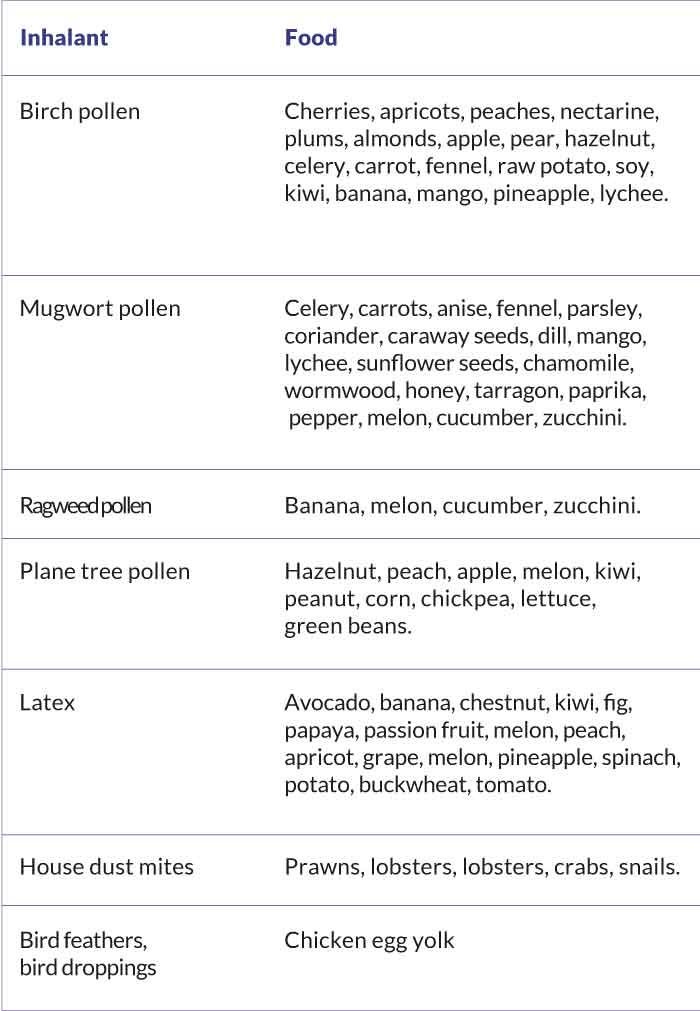Food allergy symptoms can include itchiness, swelling of the tongue, vomiting, diarrhea, trouble breathing, hives, or low blood pressure. In the developed world, 6 to 8 percent of people have some sort of food allergy. managing your food allergy mainly includes avoiding the food that you are allergic to. Would you like to know more? Keep reading!
FOOD ALLERGIES IN ADULTS: WHAT IS IT ABOUT?
In a survey of hundreds of people, 30% of respondents reported that they or a family member had a food allergy. All kinds of food intolerances such as e.g Flatulence after ingesting legumes, intolerance to milk sugar (lactose intolerance), or histamine poisoning after consuming rotten fish are attributed to an allergy. The term allergy is only reserved for immune reactions caused by proteins. It is estimated that true food allergies occur in at least 2% to 8% of the adult population. Allergic reactions to food usually occur in episodes, unless it is a staple food. In some cases, the patient’s history can already provide the diagnosis. The situation becomes more difficult if you are allergic to frequently consumed foods such as eggs or milk.
FOOD ALLERGIES IN ADULTS: WHAT HAPPENS?
Percentage frequency
of the most important
allergenic food
Hazelnut 48%
Peanuts: 28%
Walnut: 33%
Fishing: 28%
Tomatoes: 16%
Celery: 65%
Carrot: 70%
Banana: 11%
Kiwi: 33%
Apple: 42%
(expressed in% of patients with food allergy).
Along with the oral mucosa, the skin is the organ system most frequently affected by food allergies. Typical symptoms are nettle rash, swelling, especially of the face (Quincke’s edema), or acute reddening of the skin. Very rarely do these manifestations turn into an acute flare-up of atopic eczema. Isolated complaints from the gastrointestinal tract such as nausea, vomiting, or diarrhea rarely appear. Oral allergy syndrome is found in over 80% of food allergy sufferers. It manifests itself with itching and swelling of the lips, the oral mucosa, and the soft palate immediately after contact with the respective food with the oral mucosa. Symptoms of the respiratory tract are expressed as an allergic runny nose, swelling in the larynx, or shortness of breath. The most serious reaction to food is anaphylactic shock. There are factors that can exacerbate the allergic reaction. These include taking painkillers or exercising. The symptoms usually manifest themselves within minutes to a few hours after eating.
Hidden food allergens
Today’s lifestyle with frequent eating out and high consumption of ready-made products makes it difficult for food allergy sufferers to control their diet. Unknowingly ingesting a so-called “hidden” allergenic food can cause serious incidents. This can happen through contamination during cooking, e.g. the same cookware is used for the preparation of two dishes, or if suddenly the composition of a finished product is changed by the manufacturer. The product declaration on the packaging of a finished product can also be misleading. For example, an egg allergy sufferer must know that, for example, a “binding agent” can indicate that a product contains egg, or a milk allergy sufferer that e.g Sausages may contain milk. Another risk of inadvertent exposure to food allergens is that even inhaling them is sufficient for certain patients to trigger a severe allergic reaction. This has been shown, for example, in fish allergies. In some of the patients with an allergy to the respiratory tract (especially hay fever), the ingestion of certain foods can trigger allergic symptoms. This phenomenon is called “cross-reaction”. The most common pollen, as well as latex, dust mites, and bird feathers, can cross-react with many foods.
HOW DO I FIND OUT IF I HAVE ANY FOOD ALLERGIES?
Detailed patient history can often provide information on the responsible food allergen; sometimes a diet diary kept by the patient is also helpful. As with any immediate type of allergy, skin tests are usually carried out primarily. In addition, a blood test can be arranged to look for specific antibodies (IgE). If the test results do not allow a diagnosis to be made or if there is no correspondence between the test results and the patient’s history, exposure to the suspected food often only provides clarification. Exposure to the suspected allergenic food should only take place under the supervision of a doctor trained in allergology and under hospital conditions.
HOW ARE FOOD ALLERGIES TREATED IN ADULTS?
Often, patients with an allergy to raw fruits and vegetables can endure the corresponding foods in a cooked state. This is especially the case if the food allergy was acquired as a result of a cross-reaction to birch pollen. An apple allergy sufferer can then, for example, consume applesauce without any problems in the vast majority of cases. Rubbing the apple is often enough to reduce allergenicity. When in doubt, the safest therapy is to avoid allergy-causing foods. When it comes to foods that are not consumed every day, such as fish, it is relatively easy to keep an appropriate (e.g. fish-free) diet. The situation becomes more difficult with an allergy to frequently consumed foods such as eggs, milk, or wheat. An elimination diet of a staple food places higher demands on the patient. There are currently no specific food allergy immunotherapy protocols that can be routinely used.
TREATMENTS AND PREVENTION:
• Cook allergy-causing fruits and vegetables. However, cooking is not always enough to inactivate the allergens (e.g. celery) or is even completely ineffective for certain food allergies such as peanuts or fish.
• Always carry an emergency kit with an antihistamine and a corticosteroid, with more severe symptoms with an adrenaline pen.
• Avoid ingesting allergenic food.
• Get advice from a nutritionist.
CROSS REACTIONS BETWEEN RESPIRATORY ALLERGIES AND FOOD













0 Comments